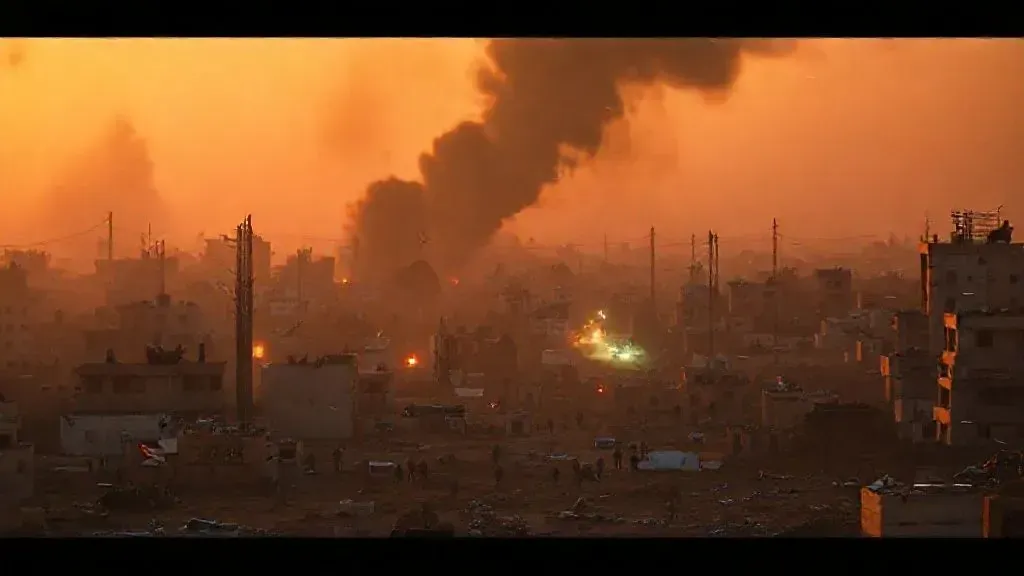
Since the U.S.-brokered ceasefire took effect on October 10, 2025, over 300 Palestinians have died in Israeli attacks, with the latest strikes adding 22 more victims. These incidents reveal deep-seated tensions in the Israeli-Palestinian conflict. The violence highlights challenges in enforcing truce terms amid mutual accusations.
Recent Escalation in Gaza
Israeli forces conducted airstrikes across northern and central Gaza, targeting what they described as Hamas operatives. Health officials reported 22 deaths, including children, in areas like Gaza City and Deir el-Balah.
The Israeli military stated the strikes responded to ceasefire violations, such as armed individuals crossing restricted zones and firing at troops. This justification aims to maintain security but raises concerns over civilian impacts.
According to Al Jazeera reporter Hani Mahmoud,
the violence never ended at all,
emphasizing the truce's fragility. This perspective from on-ground coverage points to persistent unrest.
Ceasefire Violations and Casualties
Gaza's Health Ministry noted 318 Palestinians killed and 788 wounded since the ceasefire began. These figures illustrate the human cost of repeated breaches.
The Israeli Defense Forces (IDF) claimed the November 22 strikes eliminated five senior Hamas members after detecting threats. Such targeted operations seek to neutralize risks but often result in collateral damage.
Hamas officials labeled the attacks as blatant violations, threatening the agreement's collapse. They urged mediators to intervene and halt what they term systematic aggression.
Broader Context of the Conflict
The ceasefire followed intense negotiations, aiming to halt hostilities that have claimed over 68,000 Palestinian lives since October 2023. Yet, sporadic clashes persist, complicating humanitarian aid delivery.
Aid organizations report that Israel approves only a fraction of requested supplies, exacerbating shortages in food and medical resources. This restriction affects millions displaced within Gaza.
Voices from Social Media
Social media captures public reactions to the ongoing violence. One high-engagement post highlighted the death toll's rise despite the truce.
Another user pointed out the ceasefire's ineffectiveness, noting continued attacks on civilians attempting to return home.
Analysis of Mutual Accusations
Israel maintains that strikes are defensive, responding to Hamas provocations like weapon placements in buffer zones. This stance aligns with their security priorities in the region.
Palestinian groups counter that Israeli actions constitute unprovoked escalations, aimed at undermining the truce. Such claims fuel calls for international oversight.
Experts from sources like the UN Security Council note the agreement's interruptions by intermittent violence. They stress the need for stronger enforcement mechanisms.
Humanitarian Implications
The attacks have overwhelmed Gaza's hospitals, with medics treating dozens of wounded amid fuel shortages. This situation worsens the humanitarian crisis in uncategorized conflict zones.
Displaced families in tent camps face heightened risks from aerial bombardments. Aid workers advocate for unrestricted access to prevent famine.
Path Forward Amid Uncertainty
Negotiators from the U.S. and regional powers must address root causes to sustain the ceasefire. Without accountability, cycles of violence may continue.
The November 22 incidents underscore the truce's vulnerability, with both sides trading blame. Sustainable peace requires mutual compliance and external monitoring.
These events in Gaza reflect broader instability in the Israeli-Palestinian conflict, emphasizing the urgency for diplomatic interventions. Understanding these dynamics aids in grasping the challenges to lasting resolution.


